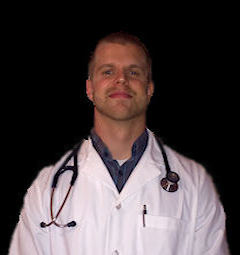For Kids 2
The next thing the nurse may do is take your Blood Pressure. Your blood pressures how hard it is for your heart to pump your blood through your body. The way she will do this is with a Sphygmomanometer also called a Blood Pressure Cuff.
This cuff is placed around your left or right arm. Then air is added to the cuff to place pressure until it stops the blood from flowing in the arm. The amount of pressure it takes gives the nurse your Upper reading. then they let the air out of the cuff un till the machine can no longer read the pressure. This gives the the lower reading. You might hear the nurse say your reading is 120 over 80. 120/80 This means your Upper pressure was 120 and the lower was 80.
These numbers can vary and the difference tells the doctor if you fall in a good range or a bad range. The bad range can be higher or lower on either number. They watch the high number more than the low number.
Sometimes the pressure this cuff puts on your arm can hurt just a little.
Try to sit still even if it starts to hurt. The more still you are the faster
the pressure goes away. also, it's best not to talk while the test is
happening, because talking distracts the nurse and can also cause a change
in your numbers.
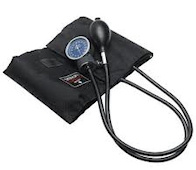
Manual Blood Pressure Cuff
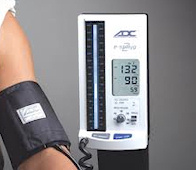
Electronic Blood Pressure Cuff
At this point the nurse will give you a break. You can sit there while she talks to whomever brought you to see Dr. Miller. She will ask some questions about why you are there. It can be almost anything, from a sore throat to just needing a vaccination for school. Once the nurse finds out why you are there, she will usually finish taking notes and then leave the room.
A few minutes later, Dr. Miller will enter the room. That's his picture at the top of these pages. He is a nice guy who likes kids! He will come in and have a quick talk with you and the person who brought you. He may ask some of the same questions the nurse asked so he can hear the answers first hand. Depending on why you are there, he may do some additional things to find out why you are feeling bad.
The first thing he might do is look at your ears and your nose. He does this using a tool called an Otoscope.
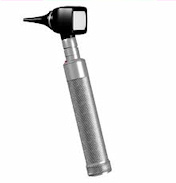
Otoscope
An Otoscope is nothing more than a Flashlight with a Magnifying Glass on it. It helps him see into your nose and your ears for anything that might be making you feel bad. It doesn't hurt and it can tell him a lot in a very short time. He can also use it to see down your throat but most of the time he will do that with a small piece of wood called a Tongue Depressor.
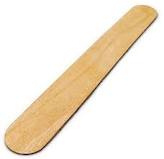
Tongue Depressor
All he will do with this is ask you to open your mouth wide and say Ahhhhh. He will then press down on your tongue to see to the back of your mouth. The Tongue Depressor simply helps keep your tongue down and out of the way so he can see better. He may hold your tongue down with the tongue depressor in one hand and use the other to hold the Otoscope. None of this hurts either, it just helps him see if there is anything in your mouth or throat that might be making you feel bad.
It's almost guaranteed that he will listen to your heart using a Stethoscope. The Stethoscope allows him to hear your heartbeat amplified. It works like a microphone and picks up the slightest vibrations. You have to be quiet while he is using the scope. Both he and the nurse might check your heart. You might see these tow different types of Stethoscopes.
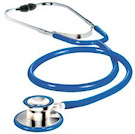
Nurse's Stethoscope
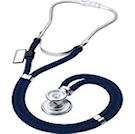
Doctor's Stethoscope
There's just one more thing he might do and that is check your reflexes. Sometimes when you are feeling bad, your reflexes slow down.
He might tap on your elbow and your knee with a Reflex Hammer. this almost NEVER hurts and it's fun to watch your arm or leg jump when he taps on them with the hammer. Even when you are feeling so well.
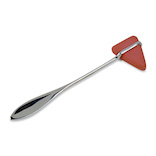
Reflex Hammer
The other tool he might use is the Reflex Wheel. This he runs up and down your arm and sometimes on the bottom of your feet. It tickles a little but most times does not hurt.
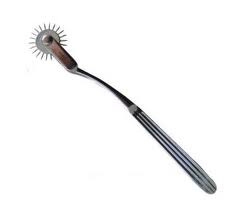
Reflex Wheel
After checking all these things, he will decide what to do to make you feel better.
